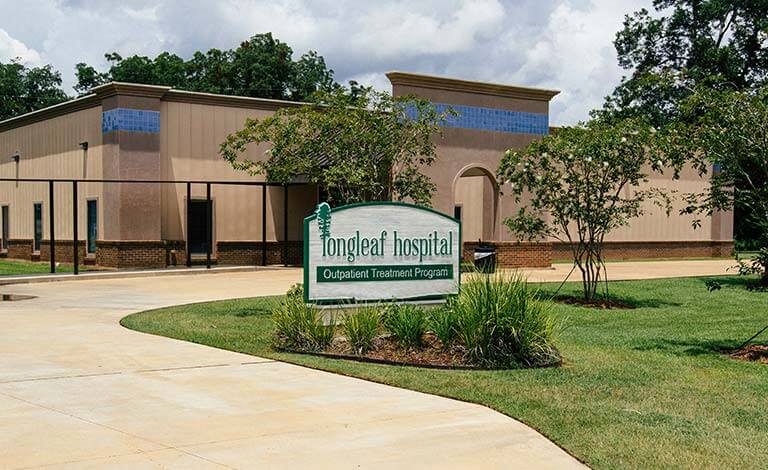Self-injury (also called self-harm, self-inflicted violence, or non-suicidal self-injury) is a means that some people use to express and cope with deep distress and emotional pain.
Understanding Self-Harm
Learn about self-harm
No matter how counterintuitive it may seem for others, hurting oneself can ease emotional pain because it releases certain brain chemicals that produce pleasurable sensations. Unfortunately, the relief that accompanies self-injury doesn’t last very long and the emotional reasons for self-harm do not get better without care from a professional treatment center. People who self-injure often feel that the behavior is a way to:
- Temporarily release intense feelings, anxiety, and pressure
- Control and manage pain
- Cut through emotional numbness
- Exert control over something
- Punish themselves for having strong emotions
While self-injury is synonymous with “cutting,” people who self-harm do so in a variety of ways that can range from mild injury to life-threatening physical damage. Most people who engage in cutting are not doing so as an attempt to commit suicide; however, death may be the eventual tragic result. It’s important to note that self-injury does serve an emotional purpose – it is an unhealthy coping tool that allows for the expression of certain feelings that the individual can’t appropriately put into words. Unfortunately, it is not a viable way of coping with problems, as cutting causes more problems than it cures.
As self-harm is a taboo subject for many people, the act of self-injury can be veiled in much secrecy and shame. Engaging in self-mutilation may lead to a sense of relief immediately following the act, but the shame and self-loathing that follows can be overwhelming. If you self-injure, you may be afraid to tell anyone what you’re doing and how you’re feeling for fear of the judgment and disgust that you believe will result. But in order to begin the process of treatment, find someone who you can trust to talk to and let him or her know what’s been going on. It may be difficult to admit, but the first step toward recovering from self-injury is to admit to others what’s been happening and allow yourself to find the strength to enter into treatment.
Treatment for cutting is aimed at addressing the reasons behind the self-injurious behaviors and a professional clinic can help you explore any underlying co-occurring disorders as well. It is very possible to recover from self-injury; it simply may take time to learn more adaptive, healthy coping mechanisms.
Therapy, specifically cognitive-behavioral therapy, can be a great tool for those who self-injure as it allows a therapist to point out the ways in which negative thoughts and self-talk can impact behaviors. Medication may be used as a way to manage underlying mental health disorders, which can also impact the desire to injure oneself. For many, inpatient hospitalization can be very helpful in treating self-injury as it provides a break from everyday stresses and focuses on treating the whole person.
Statistics
Self-harm statistics
Self-harm is most common in teens and adolescents. In fact, 90% of individuals who engage in self-injury report beginning to do so during their teenage years. This concern is known to affect more females than males, with 60% of self-harm cases being attributed to female patients.
Causes and Risk Factors
Causes and risk factors for self-harm
Self-injury is not considered to be the result of a single cause or risk factor; rather, a number of factors work together to cause the onset of self-harming behaviors. Some of the most common causes for self-harm include:
Genetic: Many mental illnesses that are associated with self-harming behaviors are hereditary, or passed down from family members.
Environmental: People who have had a history of childhood neglect, physical abuse, emotional abuse, or sexual abuse are at a higher risk for engaging in self-harm as a coping mechanism. Additionally, people who were raised in families that discouraged the expression of strong emotions are at a greater risk for beginning to self-injure.
Risk Factors:
- Being a teenager or adolescent
- Being female
- Presence of certain mental health disorders
- Drug or alcohol abuse
- Poor impulse control
- Poor problem-solving abilities
- Having a peer group that self-injures
- Lack of social support
- Inability to express emotions
Signs and Symptoms
Signs and symptoms of self-harm
As self-harm can take many forms and is often done in secret, it can be hard to identify when a loved one or friend is engaging in self-harm. Symptoms will vary upon method used, frequency, and severity, and may include:
Behavioral symptoms:
- Shallow or deep cutting marks on arms, legs, or other parts of the body
- Carrying tools of self-injury (e.g. razors) in personal belongings
- Picking at old wounds to prevent wound healing
- Dermatillomania (skin-picking)
- Trichotillomania (hair-pulling)
- Burning skin
- Banging head or other body parts against hard objects
- Hitting oneself
- Sticking objects into the skin
- Ingesting poisonous substances or non-edible objects
- Reporting frequent accidents without known causes
- Wearing long pants or sleeves in hot weather
- Increasingly secretive behaviors
Physical symptoms:
- Broken bones
- Blood stains on clothing, bedding
- Blood-soaked tissues
- Cuts that won’t heal
- Unexplained, frequent injuries
- Patches of baldness on scalp from hair-pulling
Cognitive symptoms:
- Feelings of worthlessness
- Depression
- Anxiety
- Feeling emotionally numb
- Self-loathing
- Feeling hopeless
- Shame
- Guilt
- Anger, rage
Psychosocial symptoms:
- Social isolation
- Needing to be alone for increasingly long periods
- Loneliness
Effects
Effects of self-harm
Individuals who do not engage in treatment for self-harm will continue to see a worsening of this behavior’s effects, such as the following:
- Physical complications including severe injury and infection
- Worsening of co-occurring mental health conditions
- Inability to perform to potential at school or work
- Social isolation
- Increase in suicidal thoughts
- Organ damage
- Familial discord
- Strained interpersonal relationships
- Job loss
Co-Occurring Disorders
Self-harm and co-occurring disorders
Many people who engage in self-injury are struggling with mental illness. The most common of these disorders can include:
- Substance use disorders
- Obsessive-compulsive disorder (OCD)
- Eating disorders
- Depressive disorders
- Anxiety disorders
- Borderline personality disorder
- Other personality disorders
- Schizophrenia












